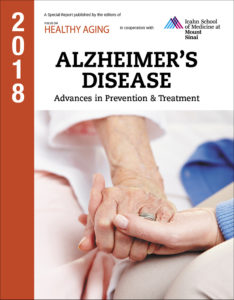Improving Balance: Start By Working With Your Doctor
Balance—or your sense of equilibrium—is something you may take for granted. It helps you stay upright when standing, know where you are in relation to gravity, and walk and move without falling. Balance is controlled by the vestibular system in the inner ear: essentially, this system tells you how your head should be positioned in relation to your surrounding environment. But balance also depends on visual input from your eyes, sensory feedback via your skin, and general steadiness supported by strong, healthy muscles and joints. Your cardiovascular health also can be a factor. Problems with any of these areas can result in what’s called disequilibrium, which manifests as disorientation, dizziness, and unsteadiness as you walk. This is common in older adults—in fact, about 40 percent of adults over age 60 report that they have experienced dizziness severe enough to affect their daily activities. Improving balance often requires intervention by your doctors.
Eat Right, Starting Now!
Download this expert FREE guide, Complete Nutrition: Low-carb diet, high-protein foods, healthy meal plans, how to use a calorie counter, and more.
Create healthy meal plans and discover the Superfoods that can transform your plate into a passport to better health.
Vision contributes to steady balance by monitoring your location and the motion of your head in space. This keeps you aware of your proximity to obstacles or potential dangers in your environment—but as you age, your visual acuity deteriorates, and this can compromise your balance. Your sense of touch can help to mediate this, but any conditions that affect the ability of your nerves to convey sensation to your brain can further impede your balance. Peripheral neuropathy is one example of the kind of nerve damage that can affect older adults, and causes a loss of sensation in the feet and lower limbs. Diabetes is often the cause—high blood sugar damages the nerves. Kidney disease and/or underactive thyroid also can cause nerve damage.
When it comes to the muscles and joints, we rely on our lower leg strength to push us upright from a sitting position, and for a steady gait. Loss of muscle mass as you age, or diseases such as osteoarthritis, which affects joint strength and flexibility, can result in generalized unsteadiness (called presbystasis) that causes gait imbalance and veering while walking.
Dizziness also can be related to orthostatic hypotension: a dramatic drop in blood pressure that can occur if we sit up or stand too quickly (you also may experience this if you take blood-pressure lowering medications). Blood pressure also can be affected by abnormal heart rhythms (arrhythmia) that decrease blood flow to the head.
Improving Balance As You Age
All of these factors mean that as you age balance might come less naturally to you, and it’s important to be aware of the possibility that you might lose your balance unexpectedly. But that doesn’t mean avoiding the movement and activity that helps preserve physical and emotional wellbeing. Speak to your doctor about any balance issues you are experiencing—it may be that an underlying condition, or a medication you take is to blame. Get a regular eye exam, and update your eyeglass prescription as needed. Also keep in mind that you need to practice balance in order to maintain it. Staying active can help you achieve this, as can balance exercises—tai chi is a good example and it’s likely that your local senior center or YMCA offers sessions.
Exercise is Key for Improving Balance
By Kate Brophy
Your doctor will likely recommend exercises for improving balance. T’ai chi is particularly effective, as are strength exercises that can help alleviate muscle weakness as you age (strong muscles in your legs and hip area can aid you when it comes to adjusting your position in order to avoid a fall). Try these exercises, and be sure you have a sturdy chair close by if there is a risk you may fall while doing them.
1. Heel-to-Toe Walk
Position your heel just in front of the opposite foot each time you take a step. Your heel and toes should touch or almost touch as you walk. Repeat 3-5 times.
2. Knee Flexion
Stand behind a sturdy chair, holding on for balance. Lift one foot off the floor and slowly bend your knee as far back as possible. Hold the position for one second. Slowly lower your foot, then repeat with your other leg. Alternate legs until you have done 8-15 repetitions. Rest, then do another set. As you progress, hold on to the chair with one hand, then with only one fingertip.
3. Hip Flexion
Stand beside a chair, gripping it for balance. Slowly bring one knee toward your chest without bending your waist. Hold for one second, then slowly lower your leg all the way down. Repeat with your other leg. Alternate legs until you’ve done 8-15 repetitions with each leg. Rest, then repeat. Progress until you can balance without holding on.
4. Heel-Walking-Toe-Walking
Place your hand against a wall, and walk forward 10-20 steps on your toes—then take 10-20 steps on your heels. Repeat the sequence three times. As your balance improves, walk without
touching the wall.
Fallproof Your Home Just In Case
It’s also worth addressing your environment to reduce hazards that could cause you to trip and lose your balance—assess your home for poor lighting, loose carpets, and lack of bathroom safety equipment.
Rosanne Leipzig, MD, PhD, is Professor and Vice Chair of the Brookdale Department of Geriatrics and Adult Development at the Icahn School of Medicine at Mt. Sinai in New York, N.Y. She also serves as Editor-in-Chief of the monthly publication Mount Sinai School of Medicine Focus on Healthy Aging. Visit her website at rosannemd.com.
Increase Your Brain’s Resistance to Alzheimer’s Disease
Clear up your misconceptions and fears surrounding Alzheimer’s and learn what you can do to prevent the disease. Get your copy of Alzheimer’s Disease.
2018 edition is available now!
The post Improving Balance: Start By Working With Your Doctor appeared first on University Health News.
Read Original Article: Improving Balance: Start By Working With Your Doctor »
Powered by WPeMatico



